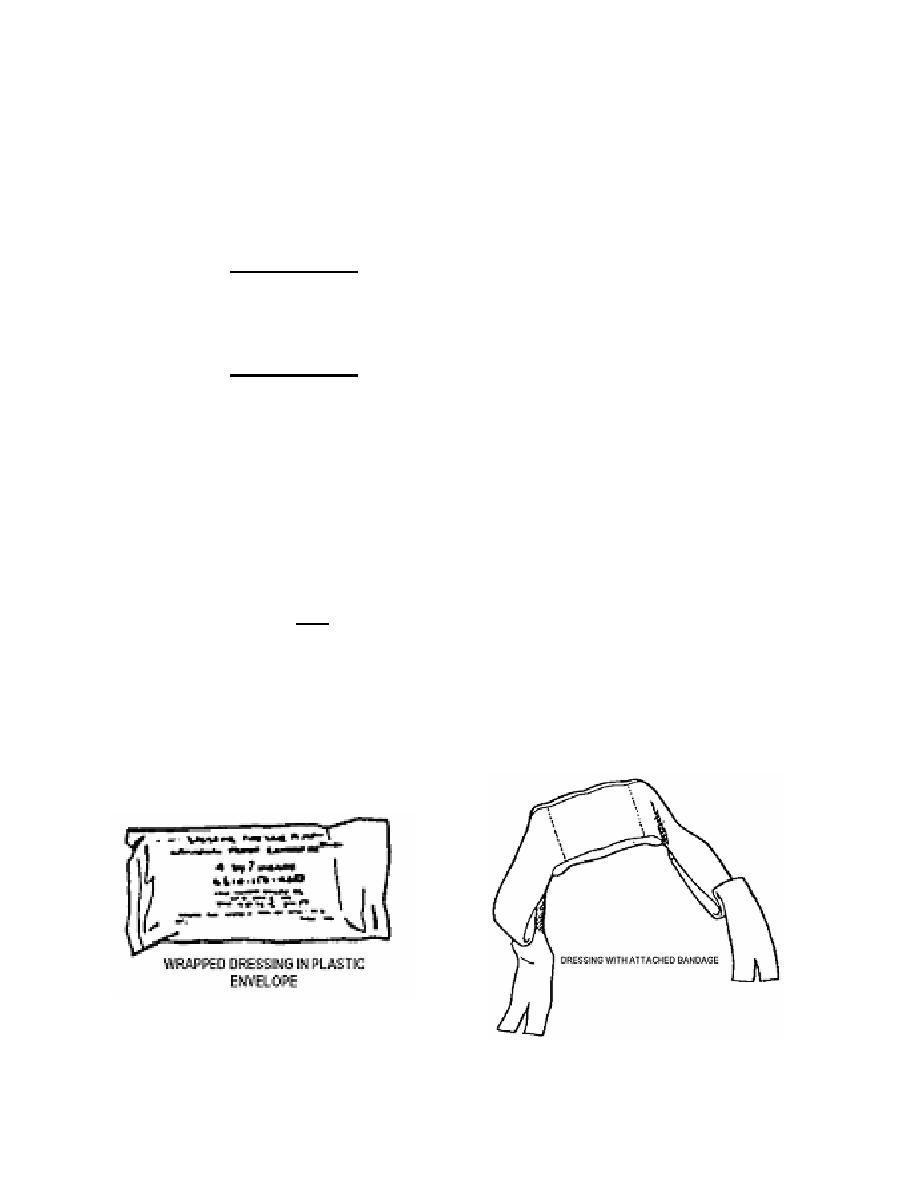
5-2.
TERMINOLOGY
As you go through this lesson, it will be helpful to know the meaning of certain
terms as they are used in this subcourse.
a. Extremity. One of the limbs.
(1) Upper extremity. Upper extremity refers to the arm (located between the
shoulder and the elbow) and the forearm (located between the elbow and the wrist).
Often, the term "arm" is used to refer to the arm, forearm, and hand. The terms "upper
arm" and "lower arm" are sometimes used to refer to the arm and forearm respectively.
(2) Lower extremity. Lower extremity refers to the thigh (located between
the hip and the knee) and the leg (located between the knee and the ankle). Often, the
term "leg" is used to refer to the thigh, leg, and foot. The terms "upper leg" and "lower
leg" are sometimes used to refer to the thigh and leg respectively.
b. Dressing. The term "dressing" refers to the material that is placed directly
over the wound. The dressing absorbs some of the blood and helps a clot to form. The
clot "plugs" the wound to stop the bleeding. The dressing also protects the wound from
additional contamination and injury.
c. Bandage. A bandage is the material used to hold (secure) the dressing in
place so the dressing will not slip and destroy the clot that is forming. The ends of the
bandage are called the tails.
d. Field Dressing. The field dressing consists of a pad of sterile (germ-free)
white dressing with a bandage (usually olive-drab) already attached to the dressing pad
(see figure 5-1). The field dressing is wrapped in paper and then sealed in a plastic
envelope. The field dressing is also called the "field first aid dressing," "first aid
dressing," and the "combat dressing." It is being replaced by the emergency trauma
bandage.
Figure 5-1. Field dressing.
IS0871
5-2



 Previous Page
Previous Page
